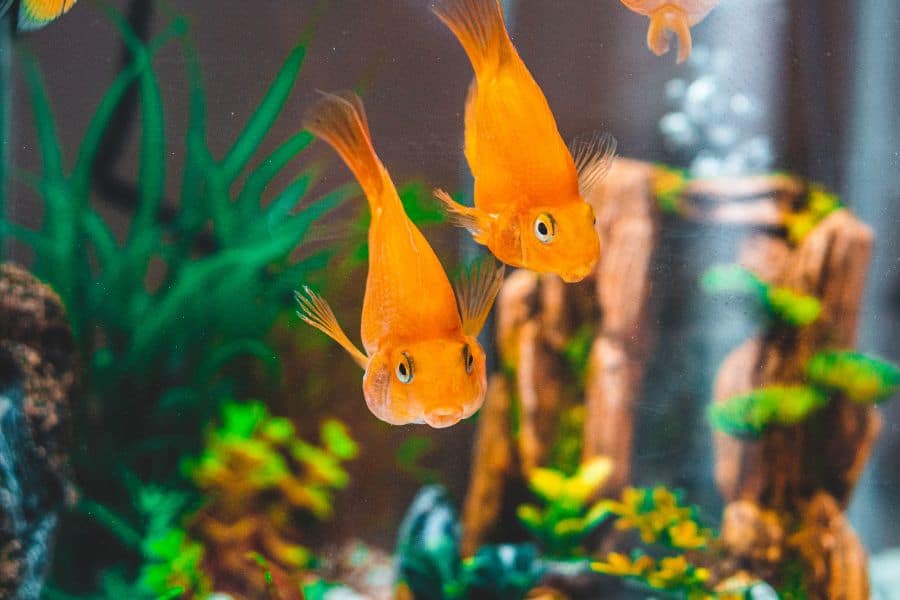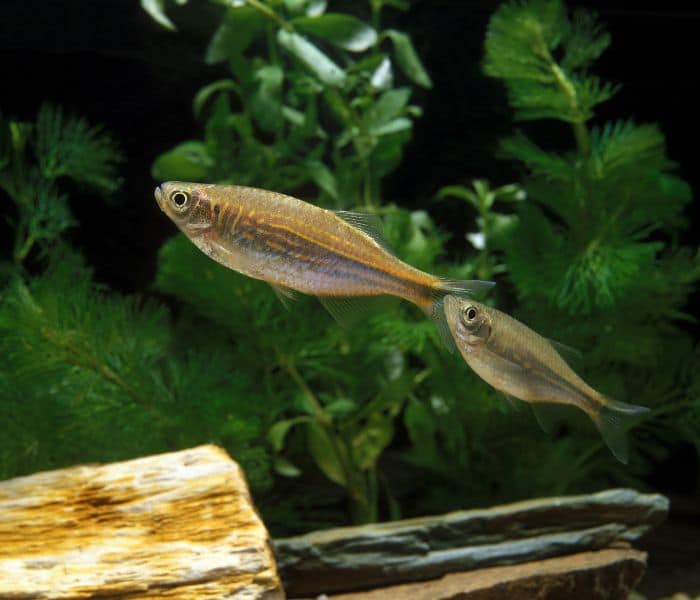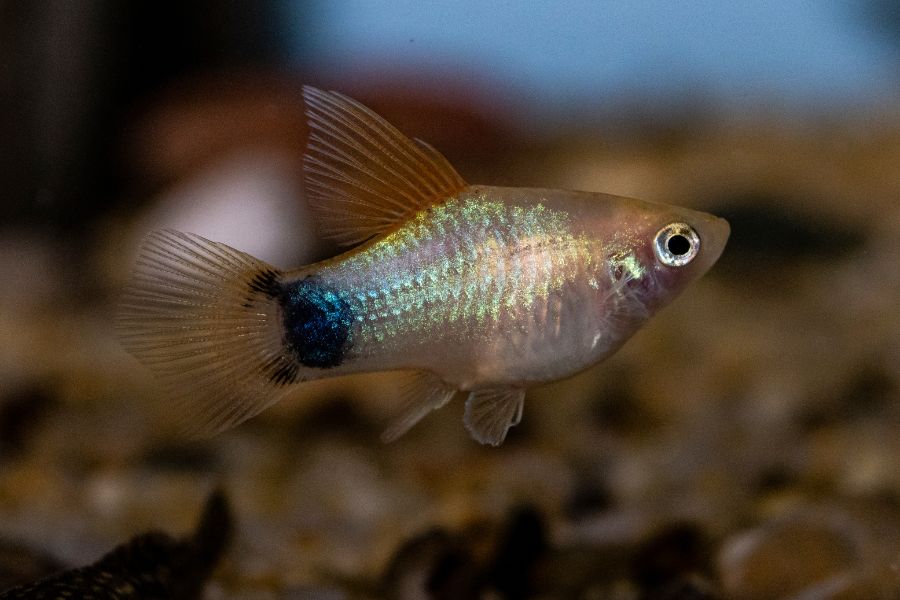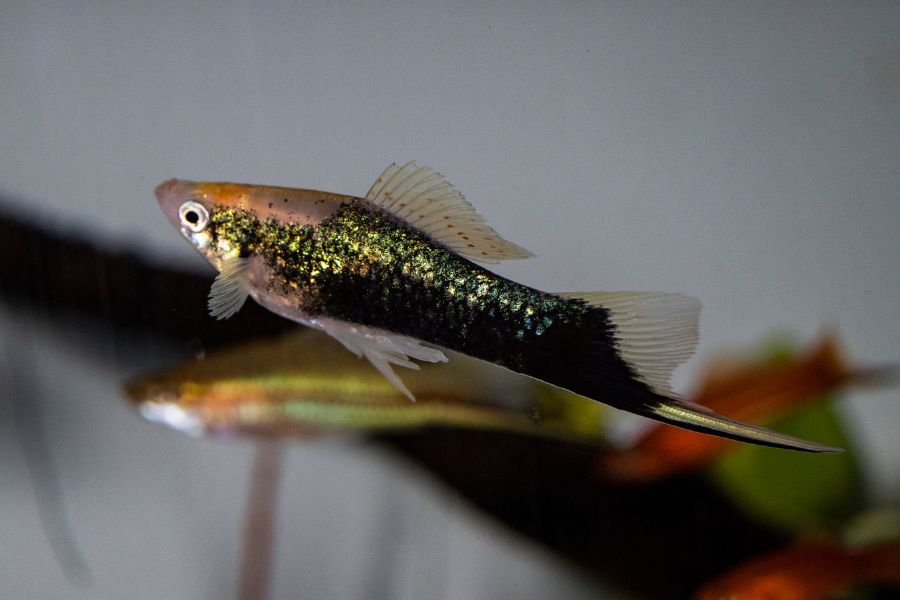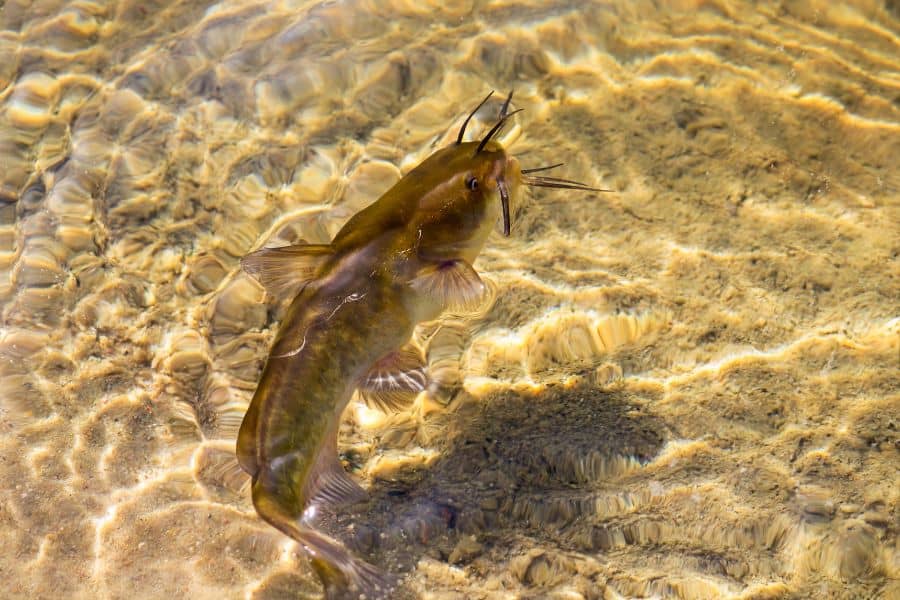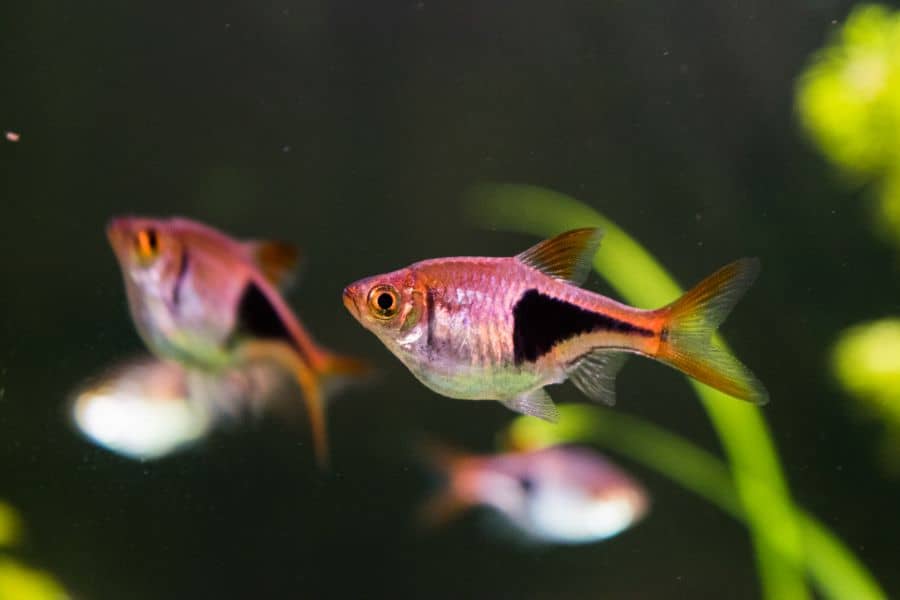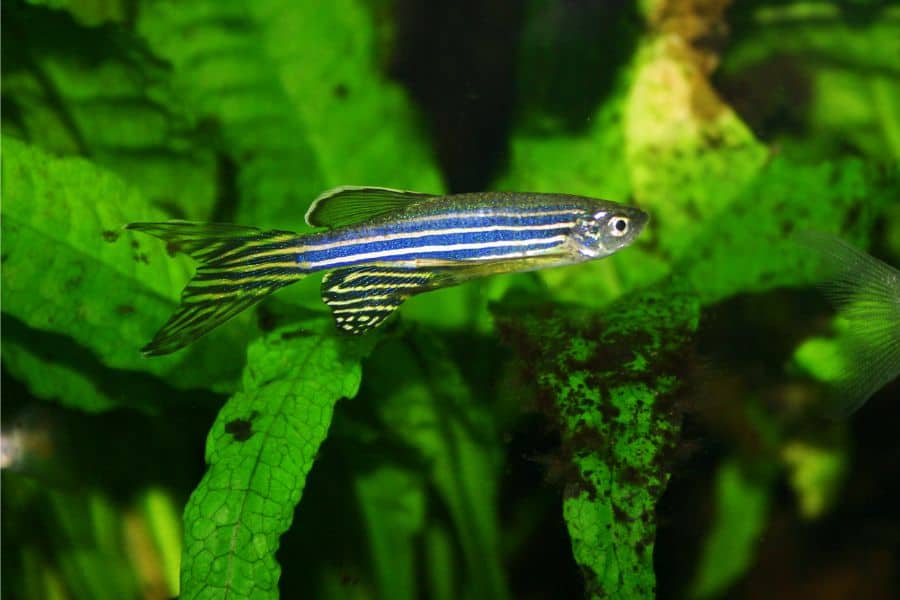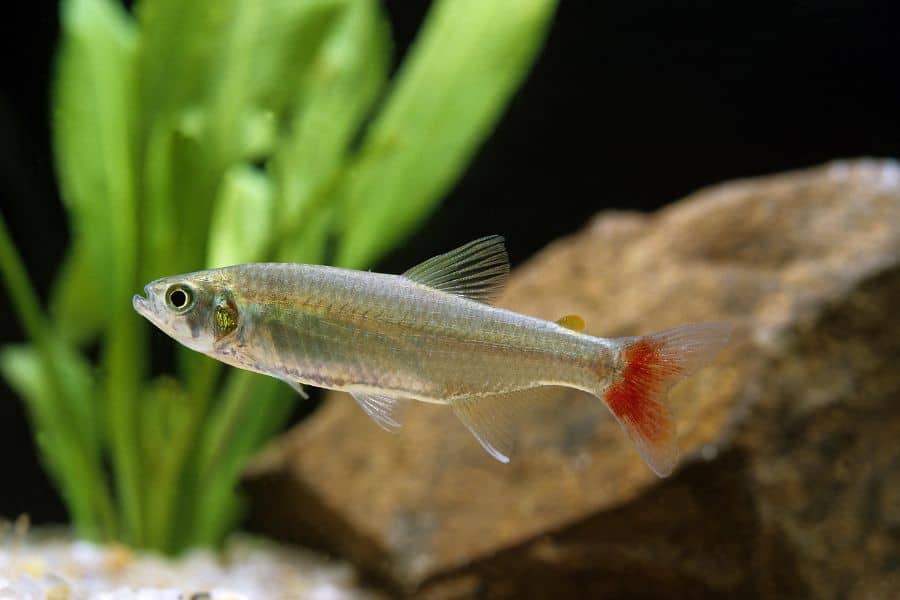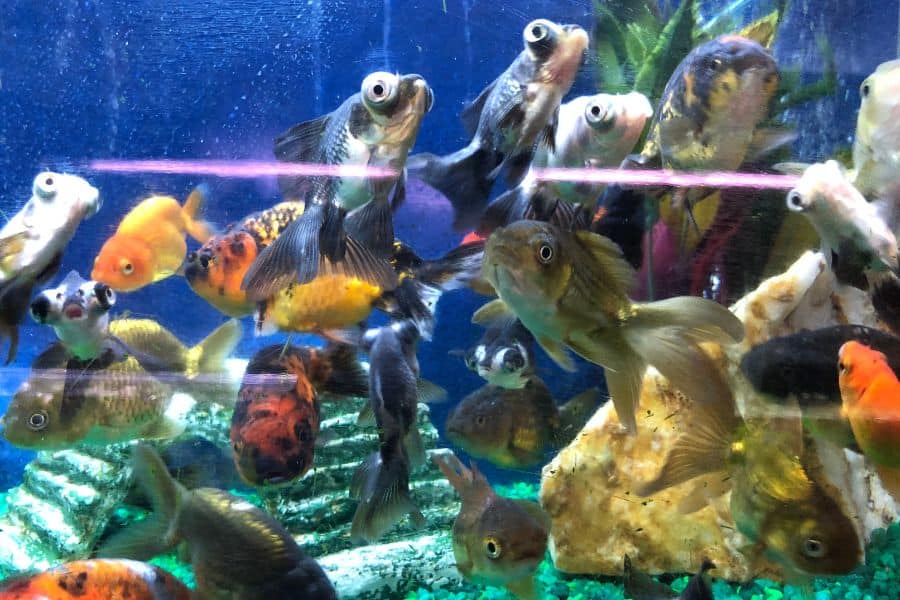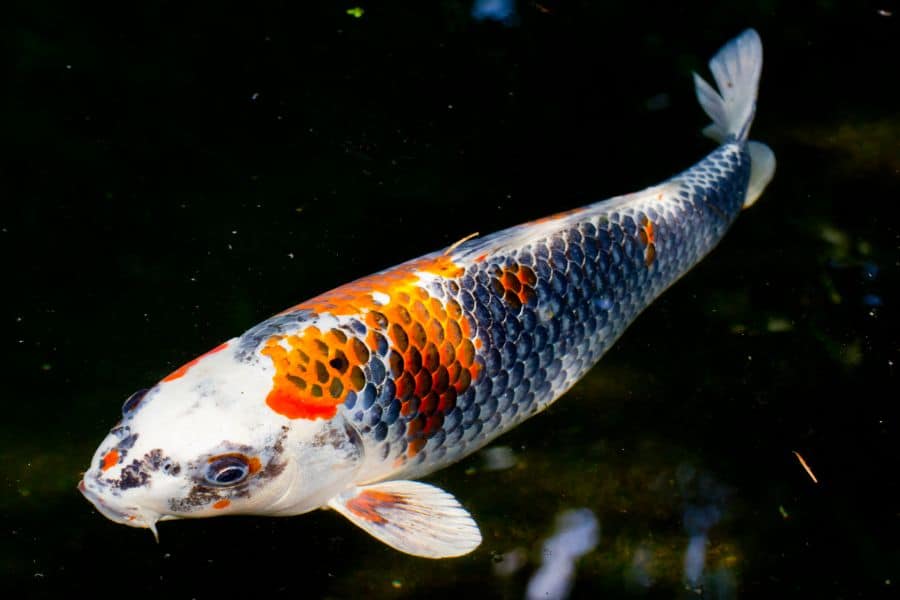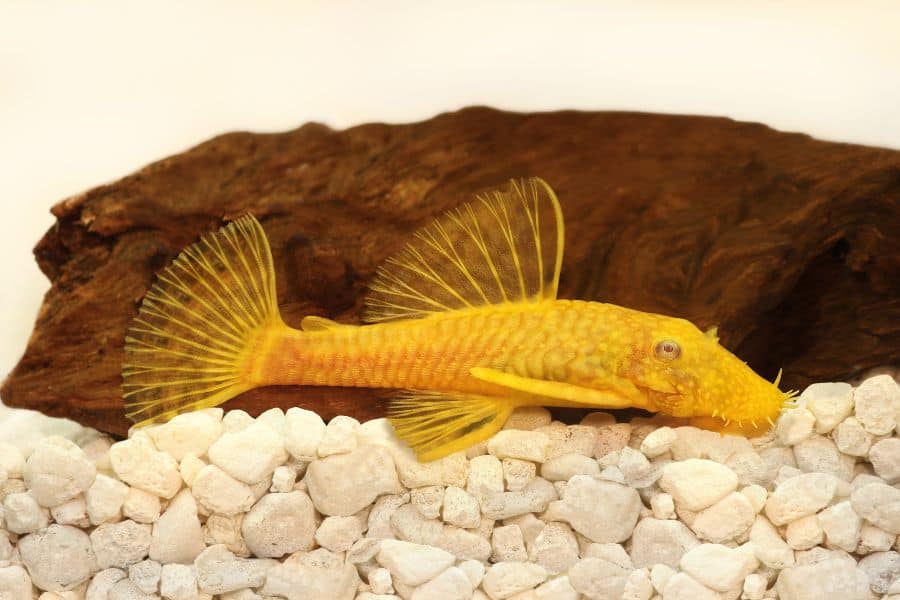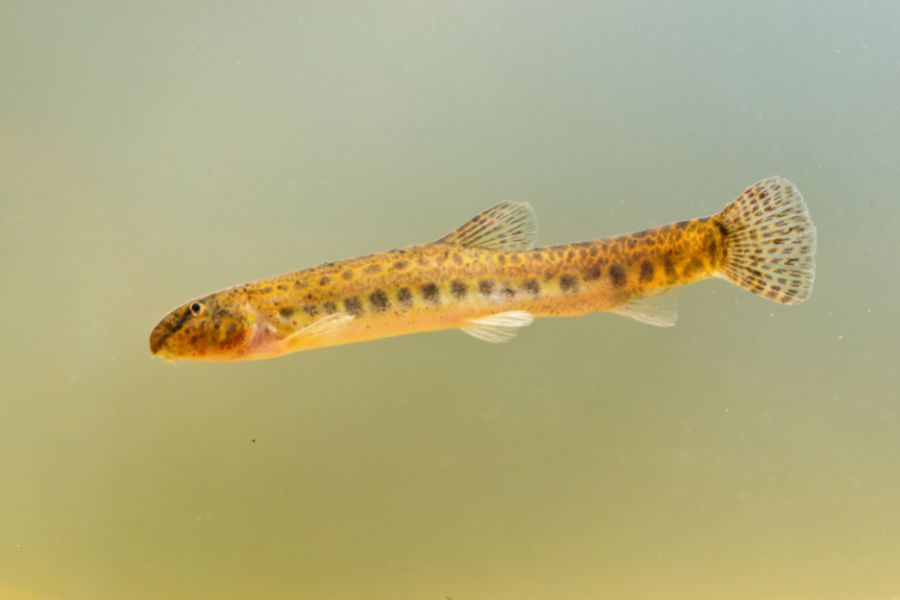There seem to be a variety of species that could thrive with goldfish; therefore, you’ll have lots of options if you’re seeking for exotic species to introduce to your aquarium.
But, it’s not possible for every small freshwater species to be the ideal match for your goldy. Every kind of goldfish has specific requirements.
For example, several fish are seawater animals, whereas others thrive in the ocean. Various species prefer warmth in the water, whereas others prefer it to be cold.
That said, it is essential to select species that prefer similar water parameters so that it becomes easier for you to house them together without worrying about them having any infections or health issues.
What Fish Can Live with Goldfish?
Although goldfish are certainly attractive and good enough to live by themselves, they also make the center of attraction to communal aquariums. Goldfish are calm and happy animals that could live together peacefully with other fish.
But, setting up a shared tank for goldfish along with several other species is quite challenging. The most challenging aspect of maintaining a healthy group of such aquatic species is finding suitable goldfish tank mates.
They are not the same as commonly found tropical fish. There are a number of factors to take into account while choosing possible tank buddies. Below are some of the essential traits:
Low-Temperature Needs
The first criterion you might consider using to limit your hunt for goldfish aquarium companions is the optimal temperature level. Goldfish are classified as cold-water species in the aquatic world.
Nevertheless, these species generally require somewhat warm temperatures to survive and thrive. However, there can be a significant discrepancy between a goldfish’s preferred temperature spectrum and that of other well-known species.
For example, colder mountainside rivers are the native habitat of goldfish. Unlike most of the species exported, they are not native to tropical climates.
Healthy living conditions for goldfish range from 65 to 75 degrees Fahrenheit. Even colder temperatures are preferred by some of these species!
Goldfish thrive most successfully in tanks without any external heating system. It makes it impossible for creatures that need incredibly warm temperatures to survive.
Easy-Going Personality
Goldfish are often happy and peaceful. They are also not aggressive. Beware of any fish that has a history of displaying violence in any way.
Goldfish are incapable of protecting themselves from high-strung species. It is particularly relevant among exotic or slow species.
Introducing a hostile or active species to the goldfish tank might also trigger unnecessary stress. Goldfish prefer to occupy the whole aquarium.
They are unbound, which might be a concern for species that prefer to claim specific territories. The continuous territorial attacks are unhealthy for any species engaged, so maintain fish that have personalities as similar as possible.
The Right Size
Many people overlook this specification while selecting fish. Medium-sized species are considered the best choices for goldfish. The optimal length should be 3 to 4 inches.
But, you must make sure that the associate species are the same size as your goldy. Small species in the aquarium may soon be misinterpreted for live feed if you own some!
The goldfish’s behavior is more of a matter of misjudgment than actual aggressiveness. To avoid unintentional attacks, house aquarium buddies of similar size. Try to find slightly bigger fish that are difficult for your goldy to swallow easily.
Similar Activity Levels
Finally, you should ensure that all the animals in your shared aquarium have similar activity levels. Not only does this reduce anxiety, but it could also lower the risk of injury!
There are around 200 distinct types of goldfish available. Many move slowly, whereas others are quite vigorous. Wild goldfish may be found anywhere.
They are powerful swimmers who enjoy darting throughout the aquarium at full speed. It is also true with shubunkin and fantail goldfish.
Mixing goldfish among slow-moving species is a dangerous combination. Any animal that enjoys a laid-back lifestyle might be too stressed by them and have their fins nibbled by strong fish.
The exact rules are applicable to exotic goldfish. The bodies of exotic kinds generally appear bulbous-shaped with swinging twin fins.
Stronger tankmates would just nibble their fins, causing damage and serious illnesses. Keep short-finned fish that have a similar temperament to avoid such incidents.
The Best Goldfish Tank Mates
1. Hillstream Loach
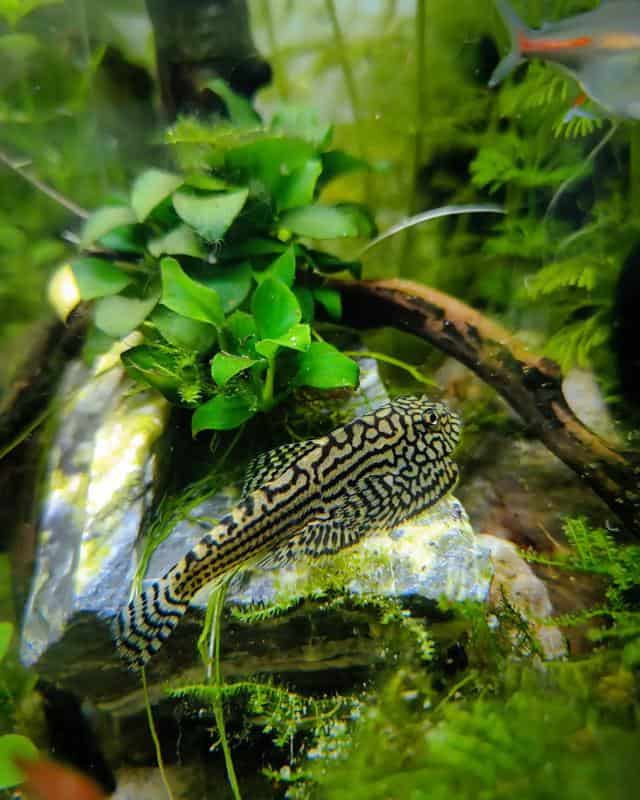
This fascinating unusual species resembles a small stingray and behaves similarly to a pleco. It feeds on microalgae, survives on food waste, and sticks to the glass wall so hard that goldfish are unable to consume them.
Other than that, they prefer low temperatures, similar to goldfish. This family of species features the ringtail hillstream cory, Kalimantan sucker cory, Chinese flower puffer, as well as a number of other sleek species.
- Size: 2-3 inches
- Tank size: 20 gallons
- Care Level: Easy
2. Giant Danio
Giant danios are quite colorful species that will light up your tank. Their appearance is a lot similar to its other variant zebra danio; but, they are often bigger than zebra danio, and with greater size, their colors appear more vibrant.
It is best to keep your goldy with giant danios if their temperament is the same. These danios love to swim in small schools of 5-6 fish and are known to be fast swimmers.
They can outrun goldfish pretty fast, so you don’t have to worry about them being chased by goldfish.
- Size: 4-6 inches
- Tank size: 55 gallons
- Care Level: Easy to intermediate
3. Platy
When maintained in a tank with green vegetation, this fish enjoys it and swims more freely. Since it won’t survive in a mild, acidic environment, it has to be maintained in medium to hard water.
They often thrive in forested weak current flow areas like ponds, wetlands, streams, and ditches. It is particularly linked with areas rich in microalgae and pollen.
- Size: 2.8 inches
- Tank size: 20 gallons
- Care Level: Easy
4. Swordtail
These fish can be found in several locations in the wild. They may be found in watersheds, lakes, canals, pools, and fast-moving streams with pure to muddy water with a depth of around 1500 meters.
Generally, the depth of the river is 1.5 meters or less with no underwater vegetation present. While young enjoy peaceful coastal locations, grownups frequently assemble in seas that have a higher current.
- Size: 5.5-6.3 inches
- Tank size: 15 gallons
- Care Level: Easy
5. River Murray Rainbow Fish (Australian Rainbowfish)
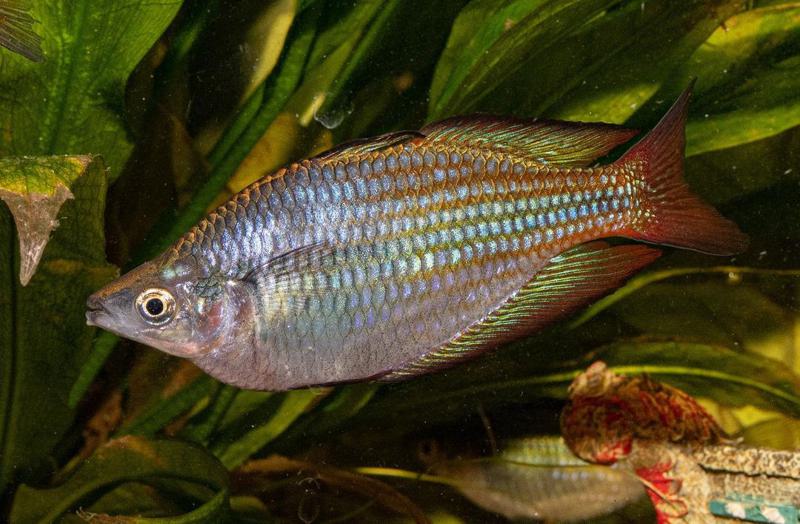
These beautiful rainbow fish have a stunning silver-colored body and are commonly found in Murray River, Australia. They are quite hardy and have a strong resistance to various water and climate temperature.
Although, if you want to see their color pop out more, you must house them in water conditions at a temperature of 70-78 °F. These species are quite new to the aquarium world, and fish keepers are learning new ways to keep these species comfortable in captivity.
These species dwell in a group of 4 fish and require a minimum of 20 gallons of the tank. However, when housed with a goldfish they require 75 gallons of the tank.
- Size: 3-4 inches
- Tank size: 75 gallons
- Care Level: Easy
6. Dojo Loach
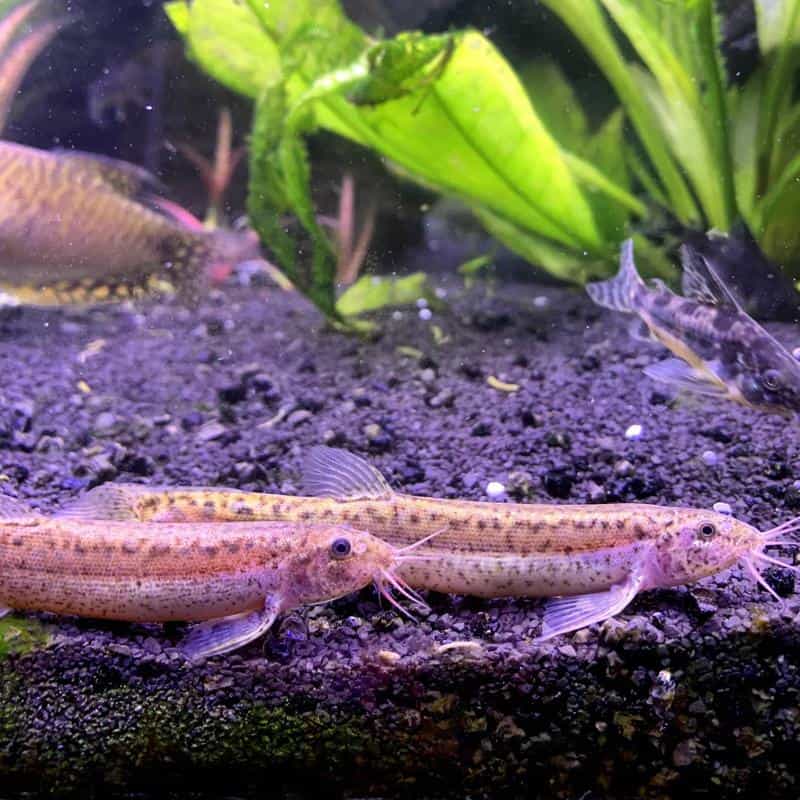
Dojo loach is known to be a calm species. They may coexist with rosy barbs, danios, rasboras, goldfish, minnows, and other loaches in shared tanks.
They prefer a tank with fresh water, periodic half-water replacements, and a bedding of tiny stones or pebbles. Since they normally dine at the tank’s ground level, sinking items could be used to feed them.
They may eat brine shrimp, bloodworms, earthworms, crustaceans, or fish flakes.
- Size: 12 inches
- Tank size: 50 gallons
- Care Level: Easy
7. Checker Barb
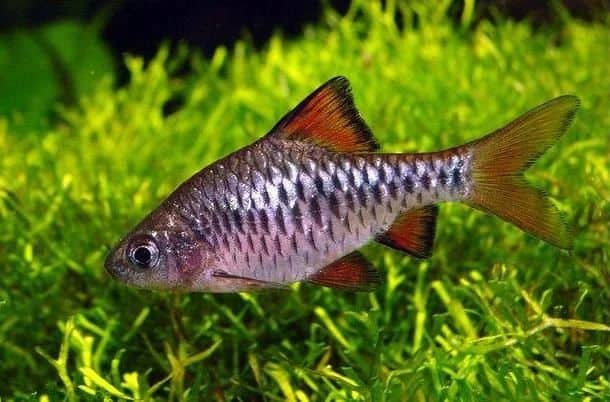
This barb is only located in Asian and Malaysian countries. It could be found in communal areas, parks, ponds, small dams, and sometimes water fountains.
It is easily spotted by its exceptionally big scales and black rims that shine in bright colors. Their primary color scheme is grayish brown and deep red fins.
Generally, barbs have warm personality and lives by themselves or in bigger groups. This species will surely add a shine to your tank.
Goldfish can easily adjust to species having similar temperaments. Both species are quite playful and would enjoy each other’s company in a communal tank.
- Size: 2 inches
- Tank size: 20 gallons
- Care Level: Easy to moderate
8. Brown Bullhead Catfish
This carnivorous aquatic organism known as the brown bullhead catfish is native to the United States. It is classified mainly by the presence of an extra pectoral fin around the caudal panicle.
This fish was imported into Europe from the northwestern United States, New Zealand, Peru, and Costa Rica. They reside in clean, peaceful, waterlogged areas, lakes, and streams near dirty or rocky grounds.
It belongs to the catfish group and is recognized as Ameiurus melas.
- Size: 8-13 inches
- Tank size: 75 gallons
- Care Level: Intermediate
9. Rasbora Heteromorpha
Freshwater species called Rasbora Heteromorpha require habitats having a lot of plants, big open spaces for movement, a covered bottom, and occasional lighting.
Although the optimal range is around 23 to 26 degrees Celsius, in their situation, the water degrees do not matter. The tank’s pH level should range from 6.0 to 6.5. They are schooling fish.
House them in a set of no less than three. They are non-picky and get along with the majority of fish. They would also consume any type of diet.
- Size: 8-13 inches
- Tank size: 75 gallons
- Care Level: Intermediate
10. Rosy Barb
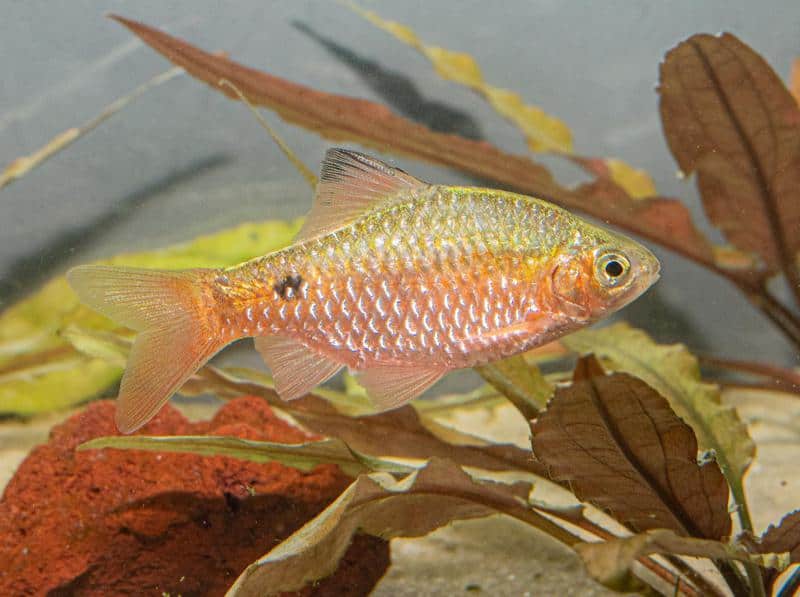
This tropical aquatic species is very lively and adds life to any tank. Even though they are calm, many barbs have an inquisitive nature, and they occasionally chew on the flapping fins of weak or slow-moving animals.
Also for fish keepers who are just starting out, gourmet fish is a great pick.
- Size: 6 inches
- Tank size: 30 gallons
- Care Level: Easy
11. Nerite Snails
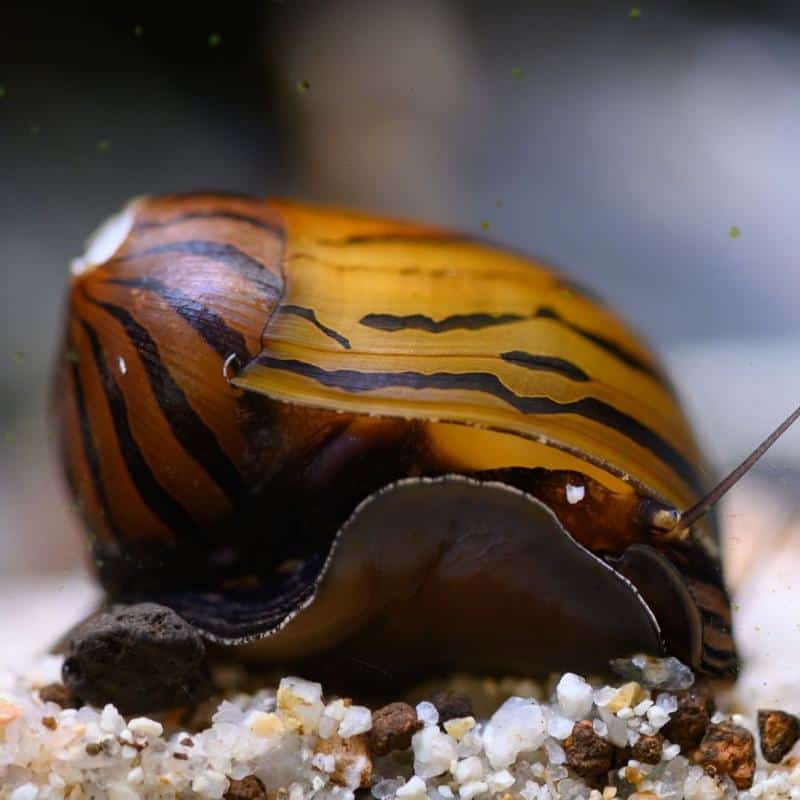
These snails are very colorful that will turn any boring aquarium into beauty. Their shells are around 0.5-1 inch in diameter and are quite tough so your goldfish can not swallow them.
These snails never reproduce so your tank will always carry the same amount of species. Nerite snails are very resilient and have a maximum of 2 years of life expectancy.
The best part of having these species is that they are best for beginners and do not require a lot of maintenance. They will also keep your aquarium neat and clean.
- Size: 0.5-1 inch
- Tank size: 20 gallons
- Care Level: Easy
12. Zebra Danio
Danio zebra is a rare aquatic species. It’s loved by fishkeepers, particularly novices. This small fish has an elegant appeal and is quite energetic and derives its title from its prominent characteristic: its multicolored body, which is similar to those of African animals.
Danio Rerio is surely the best option if you have no expertise with fancy species and would like to gain benefit from breeding it.
- Size: 1.5 inches
- Tank size: 10 gallons
- Care Level: Easy
13. Bloodfin Tetra
This fish requires a tank with lots of plants. They need settings with lots of plants and wide open areas where they can swim.
Other accessories could comprise tangled roots and chunks of timber. Since they frequently wander on the tank’s surface, floating plants would also be welcomed. The tank must be completely covered since it loves to jump around.
- Size: 5.5 inches
- Tank size: 20-30 gallons
- Care Level: Easy
14. Other Goldfish
Goldfish are non-aggressive fish that never hurt other species. But they have the tendency to devour tiny fish that could fit into their mouths.
It may coexist happily with other animals if they can withstand cold temperatures. They possess a tendency of destroying and consuming vegetation; therefore, you must not add any plants to their tanks.
The goldfish is smart and can remember humans. A goldfish usually has a three-month memory span. They are able to differentiate between hues, patterns, and noises, making them easily trained for a variety of tasks.
- Size: 3-4 inches
- Tank size: 20 gallons
- Care Level: Easy
15. Koi Carp
The nishikigoi and regular carp share a lot of characteristics. They are very flexible and simple to maintain.
They are quite affectionate than other species and can take food from your fingers when they trust you completely. Koi carp enthusiasts from all around the globe have started to appreciate these species as companions in past years.
- Size: 12-15 inches
- Tank size: 10-20 gallons
- Care Level: Intermediate
16. Scissortail Rasboras
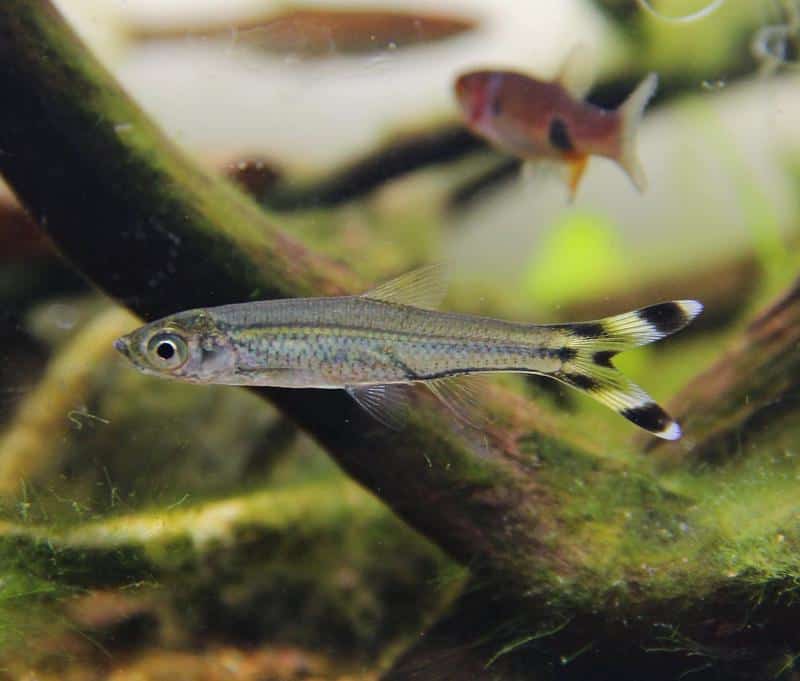
The tiny size, eye-catching scissor-like tail shape (also known as three-lines rasboras), calm disposition, and flexible nature are a couple of qualities that make this animal a good choice for hobbyists.
These are peaceful species and may thrive harmoniously with crabs and crustaceans.
- Size: 6 inches
- Tank size: 20 gallons
- Care Level: Easy
17. Longfin Bristlenose Pleco
You may usually keep these species alive by feeding them seaweed. Male Ancistrus fight other adults throughout the mating season, which makes them violent and competitive. They can even die fighting till the end.
Since females are smaller in size, they may occasionally hurt them. It is possible to raise them in tanks no larger than 80 gallons. One male for each pair of 3 females is required to maintain a peaceful environment in a shared tank.
- Size: 5 inches
- Tank size: 20 gallons
- Care Level: Easy to intermediate
18. Hoplo Catfish
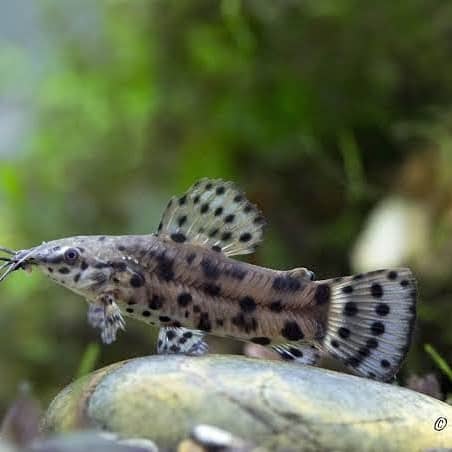
This colorful species enjoys lush tank plants and comes from South America. Hoplo catfish has the ability to escape from the container; therefore, a strong lid is required.
It flourishes in schools of a minimum of six fish, with sufficient room for moving, and often with sections of gravel substrate where they may dig.
- Size: 6 inches
- Tank size: 55 gallons
- Care Level: Easy
19. Rubber Lip Pleco
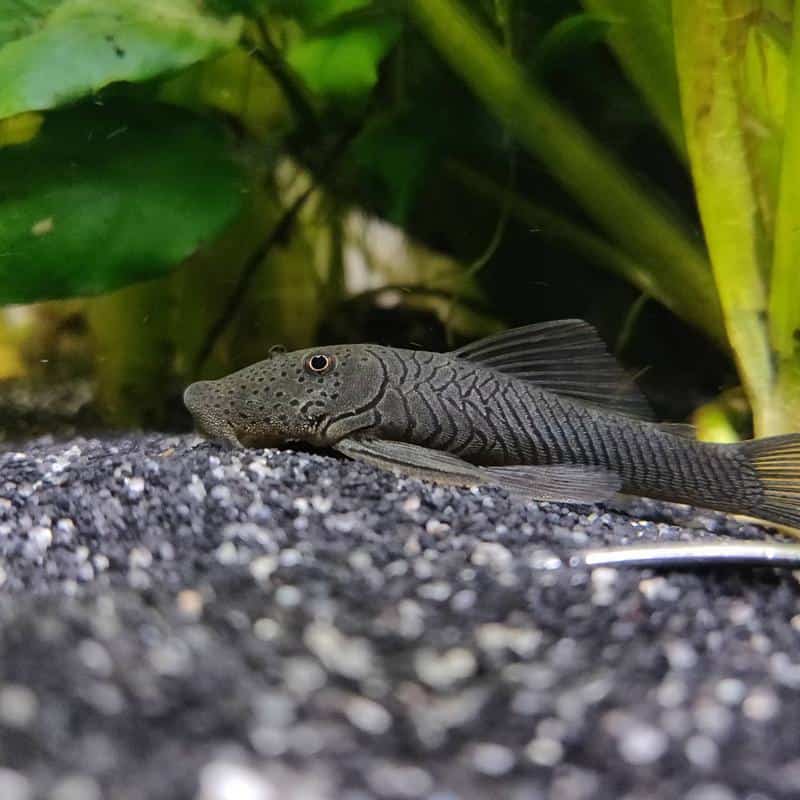
This shy tropical species get along well with similar peaceful animals and could be housed in aquariums with them. It is known as a “cleaning species” since it consumes algae from tank sides, accessories, and organic waste.
Hypostomus requires a powdered, vegetable, leafy, and grainy diet.
- Size: 5 inches
- Tank size: 25-30 gallons
- Care Level: Easy
20. Weather Loach
These species can coexist peacefully with other animals who have similar needs. They should not be kept with lethargic animals.
They swim extremely quickly and may hit sluggish swimmers. Try to house them in schools of 3 fish if you have enough space.
- Size: 20 inches
- Tank size: 40 gallons
- Care Level: Easy
21. Mystery Snail
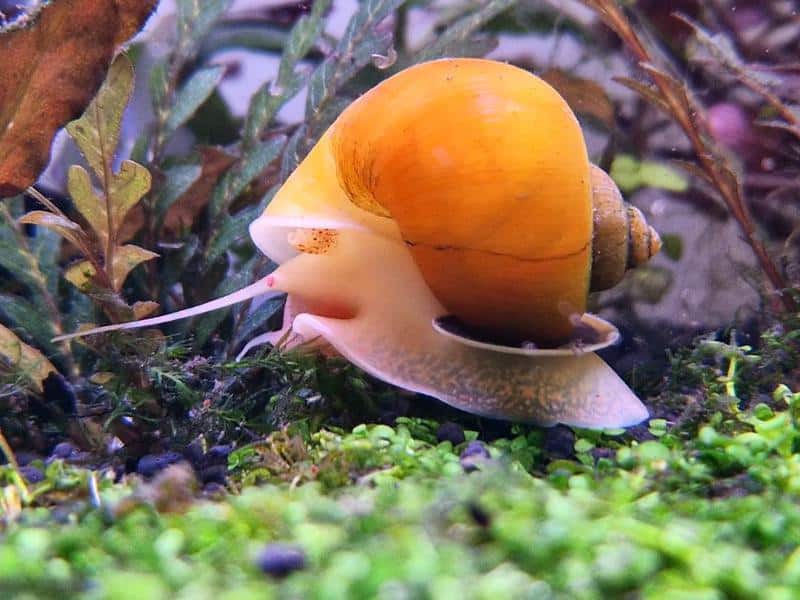
This is another creature that could coexist with goldfish. Snails aren’t often regarded as the ideal goldfish aquarium companions by most fishkeepers, unlike corydoras.
But, the mystery snail seems to be an exception in the overall snail tribe. It is significantly larger than other vertebrates.
The thick shell provides plenty of safety from starving and prying goldfish! The coolest thing about mystery snails has to be their ability to make the aquarium a better place.
They are opportunistic feeders who consume anything from leftovers to plant debris and seaweed! You will not have to clean or change the tank water as these species do most of your work.
- Size: 2 inches
- Tank size: 5-10 gallons
- Care Level: Easy
22. Hog-Nosed Brochis
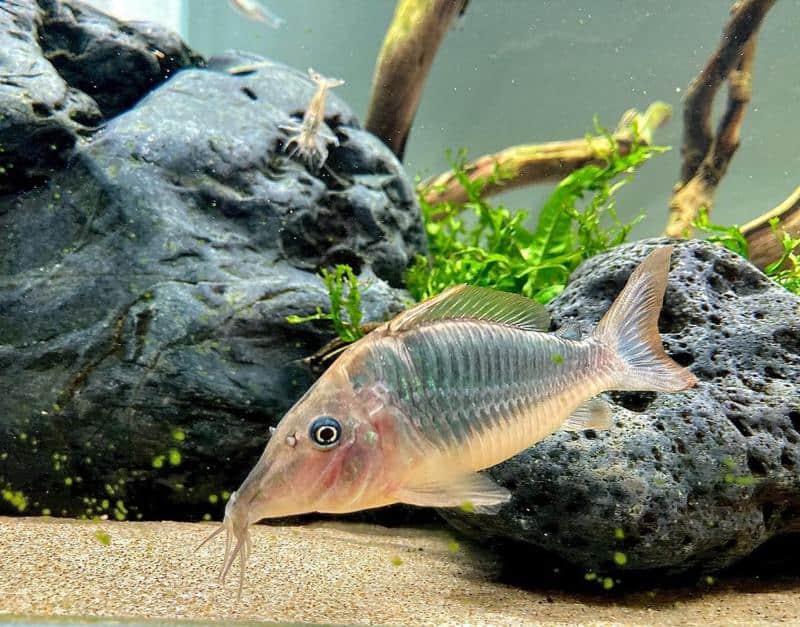
A tropical species that could withstand freezing weather is known as hog-nosed bronchitis. They won’t harm your pet because they can survive in temperatures as low as 70°F!
However, there seem to be a few important factors you must consider before introducing this species to your home tank.
They are ideal for tank companions such as regular Corys as well as other tiny aquariums due to their unusual thick-set shape and enormous length.
If you plan on introducing one, ensure your goldy is not small enough to fit into the brochis mouth.
Since they prefer to be kept in pairs, we suggest keeping a set of a minimum of 3-5 with your goldy.
- Size: 4.7 inches
- Tank size: 20 gallons
- Care Level: Easy
23. Ricefish
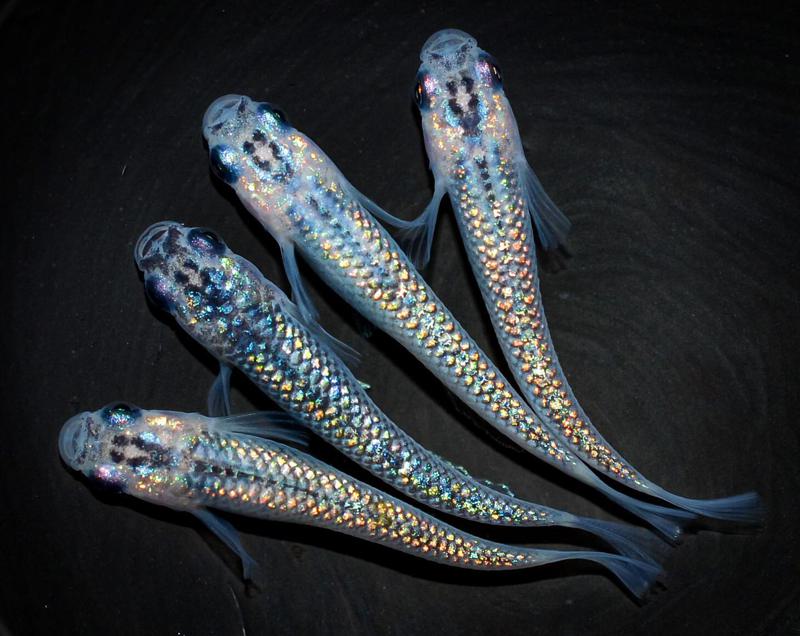
These beautiful ricefish are similar to white minnows in appearance. There are various subtypes and pigment variations in this seawater genus, including dazzling white, red, and turquoise.
They’re quite costlier than minnows; however, they reproduce fast and go well with most other species.
Just keep in mind that they’re going to contribute to the organic waste (or trash weight) formed in the water container, so ensure you have sufficient room for goldies as well as other species.
- Size: 3.3-6.7 inches
- Tank size: 10 gallons
- Care Level: Easy
Also Read:
- Can Betta Fish Live with Goldfish?
- Can Angelfish Live with Goldfish?
- Can Goldfish Live with Guppies?
- Best Smallest Goldfish Breeds
- Best Cichlid Tank Mates
- 13 Ideal Tank Mates for Your Tiger Barb
- Ideal Tank Mates for Your Discus
Goldfish Tank Mates: FAQs
Can You Add Other Species to Your Goldfish Tank?
Yes, you can. Generally, goldfish have a calm and non-aggressive temperament, so they will never hurt other species.
It is best to add a few fast swimmers with them that can tolerate low water temperatures, are somewhat bigger in size, are omnivores, are peaceful, and are energetic so that they can move fast in the tank.
Can Goldfish and Shrimp Share the Same Tank?
Goldfish would most certainly consume every sort of shrimp. If you do not wish to give your pet a nice treat, avoid pairing them with shrimp.
Tiny shrimp, such as phantom shrimp and red shrimp, should never be combined with goldfish.
Can Goldfish Hurt Other Goldfish?
Goldfish can occasionally fight when they are swimming. It is quite normal for them, and there is nothing serious as no one will die. However, there are scenarios where they compete over territory.
It could result in significant harm to one of them, so please keep this in mind in the future. You can choose to separate them into individual aquariums.
Conclusion
Now that you know about the species that are compatible with goldfish, you need to make the right choice. You need a calm, friendly, not extremely energetic, and decent-sized aquatic animal.
Your tank capacity needs to be the most important factor to think about when selecting goldfish aquarium companions. Given how much debris they create, goldfish need a significant amount of space and a filtration system on their own.
Your tank should be big enough for little species to swim far from the goldfish if possible. Start planning to relocate new species if it looks like they will not fit well with them.
Keep an eye out for fin-nipping signs in case they engage in fights. It is never too late to return the fish as you can save their lives.
